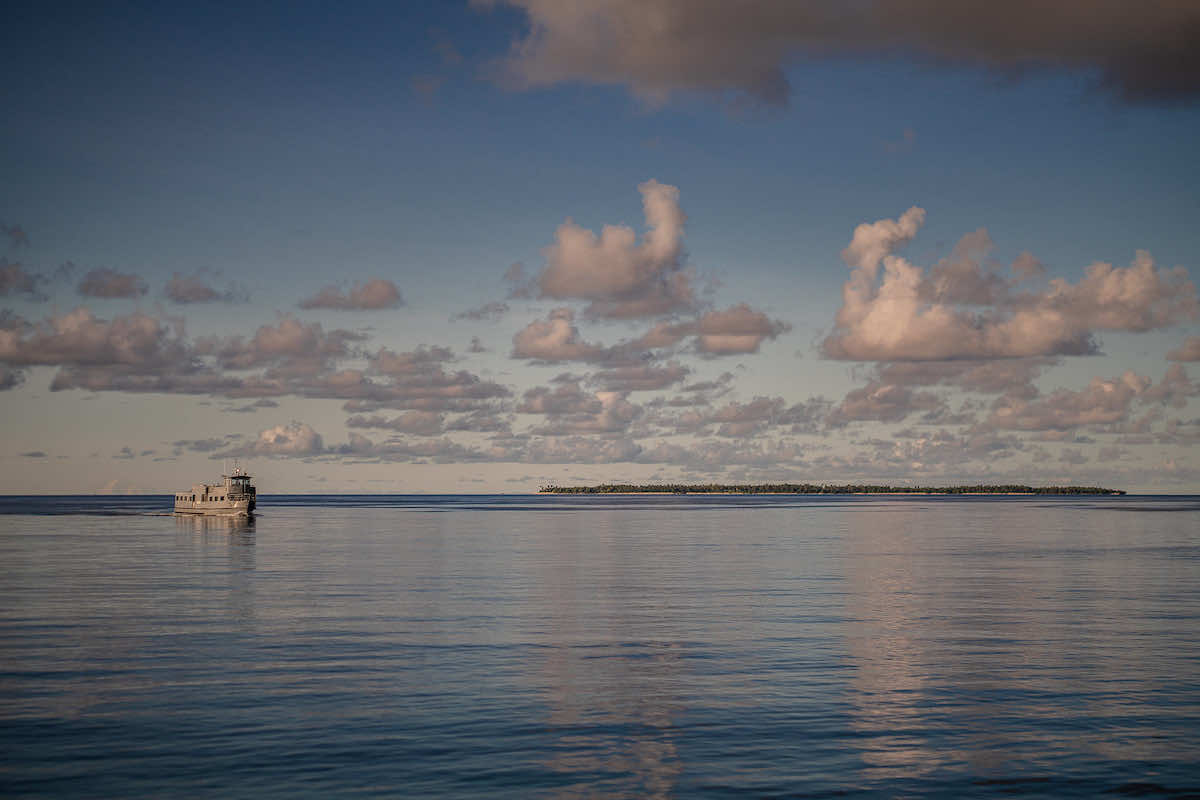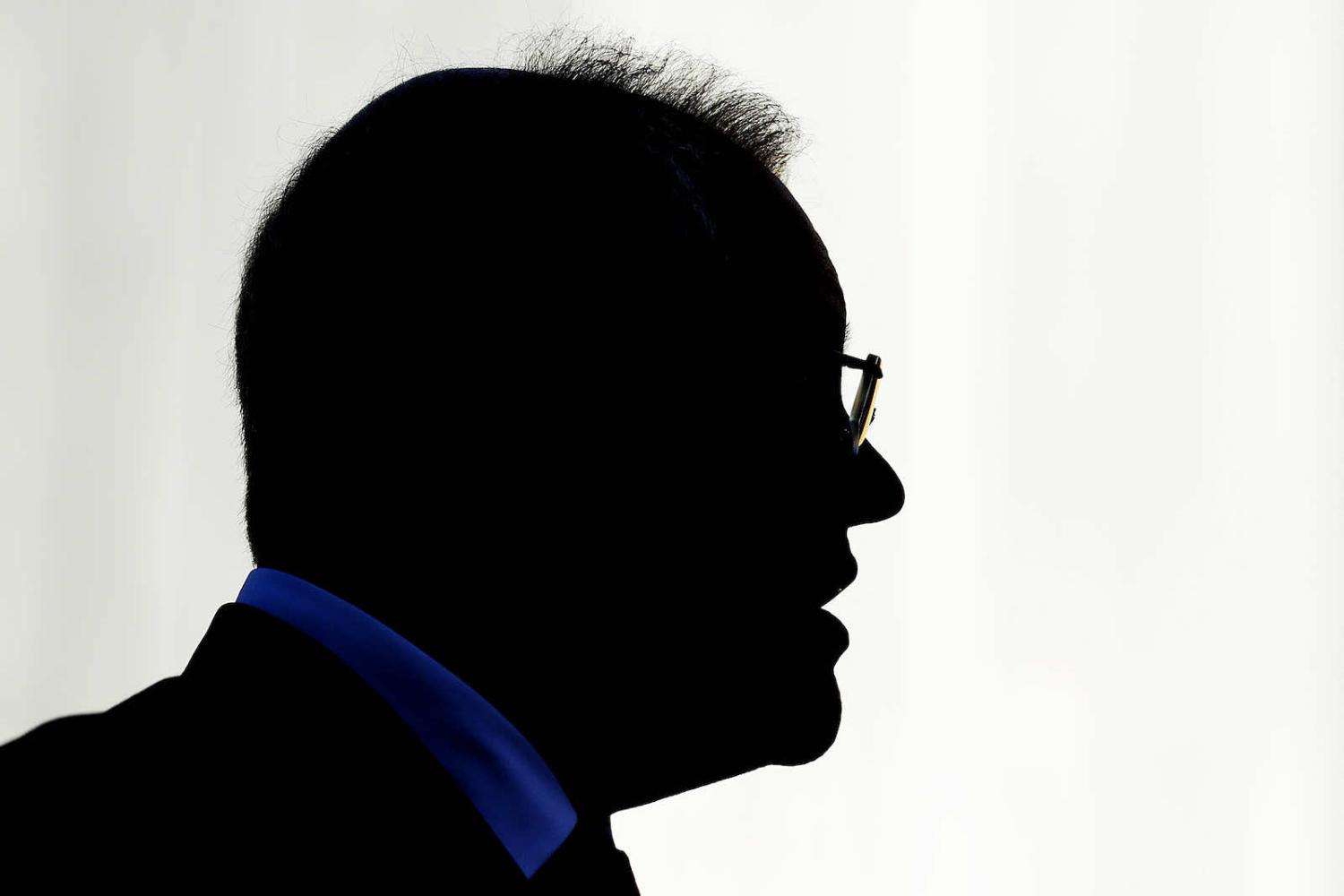Baby BRIs
It is now almost three years since Prime Minister Scott Morrison muscled up to China’s infrastructure building Belt and Road Initiative (BRI) with $3 billion in varied funding to create an Australian alternative mostly in the Pacific.
So, it was notable to see that when the Council of the European Union stepped up into this territory on Monday there was no mention of Australia.
The Council’s “A Globally Connected Europe” statement follows up the Group of Seven summit’s Build Back Better World response to the BRI and it outlines cooperation with Japan, India, the ASEAN group and the United States.
But the EU’s promised “geostrategic approach to connectivity” is no more illuminating on money or practical alternatives than the G7 communique was, which only raises the question of how Australia’s own infant BRIs are maturing.
Export Finance Australia may be under pressure to step-up in Australia’s near abroad just when banks and some construction companies have been pulling out in recent years.
The Pacific Step-up involved $500 million in grant money, $1.5 billion in non-concessional lending, an extra $1 billion in callable capital for the then Export Finance Insurance Corporation (EFIC) and extra infrastructure cooperation with the US and Japan. But last month’s Senate budget estimates hearings revealed that so far only $5.3 million of the Australian Infrastructure Fund for the Pacific (AIFFP) grant money had been disbursed for planning on five projects.
And while 14 projects have been approved none of the loan money has been drawn down. Over at the Blue Dot Network – a US-led infrastructure standards cooperation initiative with Australia and Japan – Australia has only spent $200,000 on a scoping study for a Palau cable project.
So it is perhaps no surprise that Trade Minister Dan Tehan announced out of the blue three weeks ago that Export Finance Australia (the renamed EFIC) would get the power to make equity investments in addition to lending and other export support. Tehan said:
Equity power would enable EFA to better support overseas infrastructure development and export-linked Australian businesses in sectors of economic significance.
This looks like a backdoor version of the development finance institutions some other countries use to seed commercial projects of strategic value in developing countries and which some Australian aid experts have previously supported.

EFA has become the little heralded workhorse of economic diplomacy with responsibility for implementing a $3 billion defence export support scheme and financing critical minerals exploration in addition to the Pacific Step-up role and its normal trade credit responsibilities. For example, the exposure on its National Interest Account – which contains the most strategic lending like last year’s $440 million emergency Budget loan to PNG – has risen from $610 million in 2018 to $992 million in 2020.
But it is notable that amid all the talk about muscling up to China the Commercial Account exposure of $1.8 billion in 2020 was actually down on the $2 billion exposure in 2018 when the Pacific Step-up was announced.
EFA’s remit extends beyond the Pacific. But with the AIFFP moving slowly it may be under pressure to step-up in Australia’s near abroad just when banks and some construction companies have been pulling out in recent years.
And just as a subsequent note, it seems to be more than coincidental that EFA is suddenly allowed to make equity investments in the national interest just when the government is trying to persuade Telstra to help head off a Chinese purchase of regional mobile phone company Digicel.
Little Australia
Although Australia’s population shrunk for the first time in a century last year, only 9% of respondents to the latest Lowy Institute Poll thought this was something to worry about.
But the border shutdown has nevertheless unleashed a series of fractures over immigration management raising questions about the “Big Australia” population approach often favoured by economic and security policymakers.
Much of this debate has been triggered by the release of the five yearly Intergenerational Report which implicitly but quietly assumes a growing reliance on temporary migrants to make its 40-year economic growth, welfare and budget forecasts politically palatable for the incumbent government.
But swirling around this we have also seen:
- Reserve Bank of Australia governor Phillip Lowe reported as questioning the “Big Australia” consensus by pointing out in a speech that low skilled immigrant workers reduce training and wages for resident workers.
- Education minister Alan Tudge call time on the endless growth of foreign students in Australia by telling universities to focus more on offshore options using both online teaching and foreign campuses.
- Agriculture minister David Littleproud gain a new visa category for low skilled temporary farm workers from Southeast Asia possibly at the expense of the longer established and more strategic scheme to employ Pacific island workers.
- A Grattan Institute study call for the abolition of the Business Investment Visa in favour of taking more high skilled workers because the “millionaire” investors are usually older, participate less in the economy, and have poor English literacy skills.
- Lobbyist and former senior Coalition government staffer David Alexander call for an end to the erosion of Australia’s “First World wages model” due to the excessive use of imported workers.
It is too early to judge how these and other differences between experts and within governments will play out on what is an economically and culturally vital aspect of international engagement.
Educating future Asian leaders might have once been Australia’s fourth biggest export revenue earner but it was also a long-term soft power asset if done the right way. And some recent reports ranging from the Export Council to the Business Council/Asia Society Australia have noted how Australia’s diverse diaspora community is a valuable asset for the trade diversification which is now a key aspect of national security strategy.
But the issue is not just about absolute numbers, it is also about the composition of the immigrants. It is hard to ignore the Grattan study argument that:
The closure of Australia’s border to migration provides an unprecedented opportunity to take stock of migration policy settings.
Unloading the dumpster
Three weeks after the Morrison government rejected China’s dumping complaint as “petty”, the protest has drawn implicit backing from the government economic reform advisers at the Productivity Commission.
The Productivity Commission has long been a relatively lonely voice pointing out Australia’s heavy use of dumping duties on imports at home despite being a free trade advocate abroad.
China has complained to the World Trade Organisation over Australia’s anti-dumping duties on Chinese exports of railway wheels, stainless steel sinks and wind towers in the latest escalation of trade tensions after Australia’s own complaint about China’s dumping duties on wine.
The Commission has long been a relatively lonely voice pointing out Australia’s heavy use of dumping duties on imports at home despite being a free trade advocate abroad. So it is commendable to see it stick to its guns in its latest Trade and Assistance Review despite this time stepping into the middle of a bigger geopolitical powerplay.
The Commission points out that at the end of last year Australia had anti-dumping measures in place for 72 products from 22 different countries, with the greatest number on products from China at 17.
And just to reinforce the point about Australia using these measures more than most countries it repeats its previous conclusion:
Australia ostensibly maintained an anti-dumping system simply because it was allowed under WTO rules, and that the arrangements – at least at that time – were making Australia worse off on a national welfare basis.
Next stop for this stand-off is the slow-moving WTO where Australia unexpectedly lost a similar complaint pursued by Indonesia in 2017.
Follow the money
While the new Trade and Assistance Review is not surprisingly consumed by the cost of domestic Covid-19 assistance spending, it also marks the Commission’s first foray into examining foreign investment under an expanded mandate from the government. It contains long term analysis that shows how the flow of foreign direct investment into Australia last year at $29 billion was only about half the ten-year average.
It suggests that beyond the global investment downturn, Australia’s swift move in March last year to cut its screening thresholds for all investment to zero to warn off foreign predators might have also contributed to this.
The Commission repeats its concerns about opaque decision making on foreign investment. But it curiously does not draw on the extra disclosure in the latest Foreign Investment Review Board annual report on what happened to the investment applications which were specially reviewed due to the lower thresholds.
As noted here previously, the vast majority of these potentially “predatory” attempts to buy Australia businesses devalued by the pandemic were actually approved with fewer conditions than were imposed on the normally reviewed applications.
But that does not seem to be the liberal tone Treasurer Josh Frydenberg wants to strike on foreign investment these days judging by this recent comment:
I have increasingly seen foreign investment applications that are being pursued not necessarily for commercial objectives but strategic objectives, and as you know I have said no to applications that in the past may have been approved.

